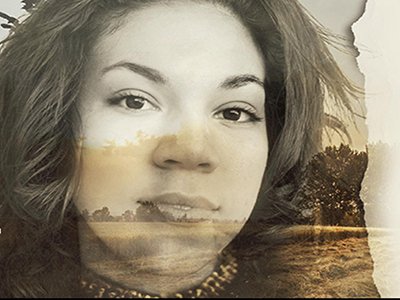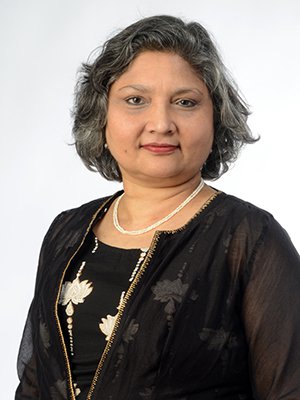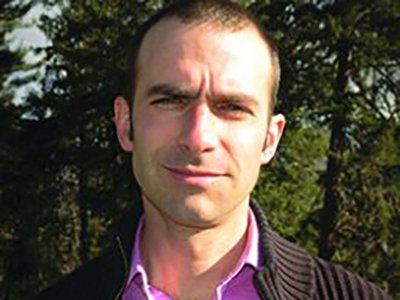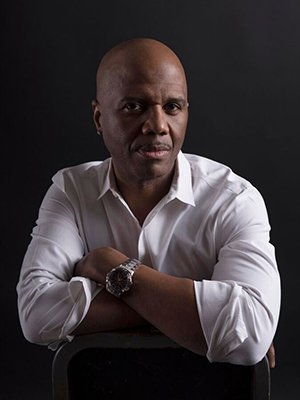Being the Stories We Tell
Syracuse Symposium organizers use fall events to probe individual, collective power of storytelling

Syracuse Symposium—a program of the Humanities Center in the College of Arts and Sciences (A&S)—continues its yearlong look at “Stories” with a spate of October events.
The lineup includes the exhibition “Look Now: Facing Breast Cancer”; a lecture by geographer Nicolas Howe from Williams College; and a panel discussion about slave narratives and identity, in conjunction with a world premiere at Syracuse Stage.
A&S recently caught up with professors Tula Goenka (TG), Timur Hammond (TH) and Kyle Bass (KB) to learn more about their respective events.
Tula, you have mounted an ambitious exhibit called “Look Now: Facing Breast Cancer” at the Point of Contact Gallery [running Oct. 11-31]. How does it reinforce the idea of “Stories”?
We have used photography and film to break down the barriers between a survivor’s public persona and their private struggles with the disease. I have been working on the project for several years. We are proud to launch it in October because it is Breast Cancer Awareness Month.

Does the show carry personal significance?
I am a breast cancer survivor, and I started this project in 2010 with two other survivors. Thanks to support from the Newhouse School, Syracuse Symposium and others, I have relaunched “Look Now” with a new collaborative team, including Point of Contact and Light Work, the latter of which has printed nearly a hundred images for the show.
Who is Cindy Bell?
She is our project photographer and a breast cancer survivor herself. She brings a lot of artistic talent and personal empathy to the process.
When you look at Cindy, me or another survivor, you have no idea of what we have gone through. Individuals tend to be private about the disease, even though it’s becoming acceptable to talk about breast cancer as a cause. When you are diagnosed, you don't know what your surgical or treatment options might be. I hope our personal stories and images can be a resource.
The exhibit is a testament to surviving breast cancer. It celebrates every participant and empowers others. Really, it’s about resilience.
Sounds like "Facing Breast Cancer" is not just for people who have—or had—breast cancer, but anyone affected by it.
Exactly. We anticipate a big turnout. The Point of Contact Gallery is hosting a reception on Thursday, October 11 [from 5-8 p.m.] The exhibit remains on display, Mondays through Saturdays from noon to 5 p.m., or by appointment until October 31. Everyone is welcome.

The following day [Oct. 12], Syracuse Symposium will present a free lecture by Nicolas Howe, associate professor of environmental studies at Williams College. Timur, what should we expect?
Dr. Howe is a geographer and environmental studies scholar who examines stories that different groups tell to make sense of the natural world around them.
In this case, sacred space.
Yes. His lecture is called “Sacred Landscape, Secular Law.” It explores how stories about sacred space have shaped conflicts over iconic American wilderness areas. [The lecture is from 3-5:30 p.m. in the Peter Graham Scholarly Commons, 114 Bird Library.]
Although Dr. Howe’s work resides in a tradition that analyzes the legal and political contexts shaping social encounters with the environment, he reminds us that cultural acts of storytelling are equally important to the ways we engage with the world around us.
How does storytelling relate to religion and the environment?
I chose Dr. Howe because his work speaks to many of the themes central to a course I am teaching this fall called “Geography of Religion” [GEO 300]. One of the goals of the course is to explore the different ways that religious traditions, especially Christian and Native American, make sense of the relationship between humans and the natural world.
For instance, Native American claims to the natural landscape on religious grounds often have been in conflict with the American legal system, which is based on secular principles. We have seen this in debates ranging from the future of Onondaga Lake to the struggles at Standing Rock. His talk will shed light on this tangled relationship.
A relationship transcending science and facts.
Dr. Howe's research shows us that debates about climate change and climate policy are more than science and facts; they involve cultural performances—storytelling—through which societies make sense of their relationship to the world.
The lecture's subtitle is "Storying Spirituality on American Public Lands." Would you elaborate?
I want our audience to understand how the United States’ natural landscapes—and wildernesses, in particular—have come to be managed and why they are so meaningful.
Dr. Howe will show how geographers’ research interests often intersect with religious studies, law, anthropology, sociology and environmental studies.

Kyle, congratulations on your latest play, "Possessing Harriet” [whose premiere production runs Oct. 17-Nov. 4 at Syracuse Stage]. Even though the action takes place in Peterboro, south of Syracuse, in 1839, its themes of race, identity and equality persist today.
Thank you. That's something our talkback will address. It's called “Stories in the Blood: Slave Narratives and Identity in Contemporary American Theatre” [running Sunday, Oct. 21, from 3:45-5 p.m., immediately following Syracuse Stage's matinee performance]. The panelists were chosen for their diversity of approach and experience with the subject.
They include Christian DuComb, John Ernest and Joan Bryant—scholar-teachers at Colgate, Delaware and Syracuse, respectively.
And the show’s director, Tazewell Thompson, and me.
People should expect a rich conversation about enslaved people’s experiences, the importance of storytelling and the centrality of identity in the American narrative.
What do you want us to get out of the panel discussion and your play, in general?
Food for thought around various questions: “What are the value, meaning and politics about dramatizing the slave experience and slave narratives in 21stcentury American theatre?” … “In what ways does theatre expand or diminish the impact of the slave narrative?”
Are we the stories we tell?
That’s another one of my questions. I want to know what responsibility art and artists have to history when creating fictive stories from real events. Is there tension and danger at the intersection of fiction and history, when issues of race, slavery and oppression rest at the crux?
Why is storytelling important?
It is intrinsic to human nature: We know who we are and who others are by the stories we tell and by the stories we’re told. “What’s your name? Where are you from? Who are you?”—they’re all invitations to tell a story. Also, the stories we invent—plays, novels, movies, TV shows—are the stories that cultures and societies imagine about themselves, for themselves.
Indeed.
TG: Human beings are social creatures, and we always seek a personal connection, consciously or unconsciously. Storytelling helps us heal from our own traumatic journeys. It also creates identification—it carries an emotional aspect that tends to support remembering the message. It increases empathy.
There's that word again: "empathy," the lifeblood of the humanities.
TH: Communities are based, in part, on the stories they tell. Storytelling thus functions as a key practice through which people come to make sense of themselves in relation to their world, their pasts and possible futures.
KB: We make theatre, and theatre, of course, is storytelling. It is a storyteller’s medium and art form.
Rounding out the month is a residency by Minneapolis-based artist-activist Seitu Jones, Oct. 4-6, and a University Lecture by Canadian author Margaret Atwood, Oct. 25. For more information about these and other Syracuse Symposium events, visit humcenter.syr.edu.
